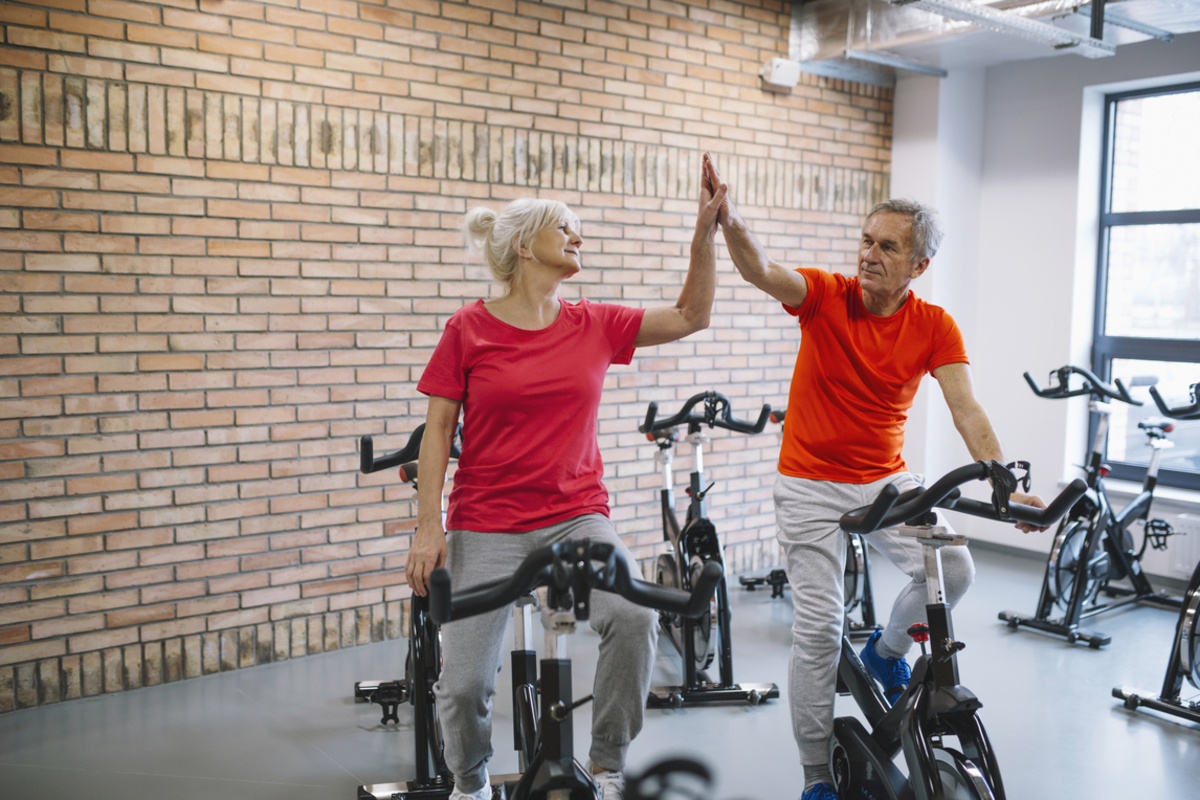Aerobic exercise is one of the most effective methods to improve health and physical symptoms in heart failure patients. It also boosts quality of life and daily functioning. Results from recent clinical trials proved that exercise can absolutely be considered a medicine for people suffering from heart failure.
We already know how much physical activity benefits a person’s health. People who live with cardiovascular disease should make exercise an important part of their lives, because regular aerobic exercise has been proven to influence heart failure patients in a drastically positive way.

What is heart failure?
The hearts of people with heart failure cannot pump blood adequately enough to meet the demands of tissues throughout the body. In other words, heart failure is the lack of a strong forward flow, which causes a congestion or accumulation of fluid in the body and lungs. Therefore, patients are plagued by symptoms of tiredness, breathlessness, and edema. Edema is fluid accumulation in any part of the body, and in heart failure patients most commonly the legs. One of the main symptoms is exercise intolerance, which means that patients have to take frequent breaks to carry out a physical activity.
What causes heart failure?
The most common cause of heart failure is coronary artery disease, which can include angina and myocardial Infarction (commonly known as a heart attack). In this condition, cholesterol deposits attach to the inside of the arteries supplying the heart itself, reducing the blood flow. High blood pressure and valve disorders are other common causes of cardiac failure. All these conditions reduce cardiac output and lead to reduction in the forward flow.
What do you need to know about heart failure and exercise?
Physical activity plays a key role in determining a person's heart health. This is because exercise increases cardiac output — the total amount of blood pumped from the ventricles to the aorta every minute. Exercise and other physical activities increase the endurance of the cardiac myocytes (heart muscle cells), which in turn strengthens the heart's pumping capacity.
Athletes' hearts are physiologically better than normal hearts. This is because their regular physical activity, causes their heart to adapt, and pump more blood than normal over the time. This makes the heart muscle stronger and the walls to thicker. In the long run, the heart of an athlete pumps same amount of blood in a lower number of beats when compared to a person with a sedentary lifestyle. Because of this, they have a physiological bradycardia which means their heart can beat at 40 to 60 beats per minute, which is normal for them and a sign of endurance.
Why should you exercise if you live with heart failure?
In the past, people living with symptomatic congestive heart failure were strictly advised to give up any strenuous activity and rest most of the time. The rationale was that this would keep their heart rate lower, making sure that their hearts wouldn't have to do any work to perform its function.
The explanation for that is the simple principle of endurance, which applies to every part of the body: The more you use an organ, the more it increases its functional capacity. The HF-ACTION trial showed that regular aerobic exercise in cardiac failure patients improves their functional capacity, and reduces disease, hospitalization, and death rates.
What should you know before starting exercise?
Having said that, it is not advisable for heart patients to rush to the gym right after reading this.
Every individual is different and suffers from a different stage of failure. Therefore, heart patients should be aware of their physical limitations before they begin an exercise program. A heart affected by a myocardial infarction or any failure is strictly prohibited from doing any strenuous exercise. Patients should consult a doctor or cardiac physio and ask for a relevant exercise regime which should be individualized according to their specific stage. In other words, everyone should follow a prescribed exercise regime. In fact, the first experience of exercising should ideally take place in the presence of a doctor, just in case, to avoid any emergency.
What is CPET?
Before starting a recommended exercise routine, a test called a "cardiopulmonary exercise test" is performed. This test determines the extent of cardiac inadequacy along with oxygen saturation in the blood and other observations, while the patient is exercising. This helps the doctor to set safe limits on workouts designed for patients with heart failure, considering its effects on their heart and lungs.
Dos and don'ts for cardiac patients who want to exercise
Heart failure patients should take some important things into account before exercising:
- Firstly, always check for cold and humid weather as neither of these are recommended. Extremely cold environments can induce dyspnea (difficulty breathing)
- Start with a mild cardio workout, for example a simple treadmill for 10 to 15 minutes daily, with anormal speed. Gradually increase the speed and duration.
- Exercise should be stopped in case of severe fatigue. Some tiredness during exercise is normal, especially for a heart failure patient.
- Take frequent breaks and do not push too hard.
Heart patients can not enjoy the complete liberty of being able to perform all types of exercise. Most of the recommended exercises are aerobics (cardio). Aggressive weight lifting and strength training are not recommended for obvious reasons. Aerobic exercise includes walking at a steady pace and slow jogging. If you are going to a gym, treadmill, cross trainer, and rowing are the recommended exercises. For the first time, these exercises should be performed in a supervised and guided environment.
In summary, aerobic physical activity has proven its role in maintaining improved symptom control and sustaining a better life quality for heart failure patients. Considering the results of clinical research, it should be treated as no less than a medicine. If you suffer from heart failure, talk to your healthcare professional about different exercise regimes suitable for you.
- Photo courtesy of SteadyHealth

